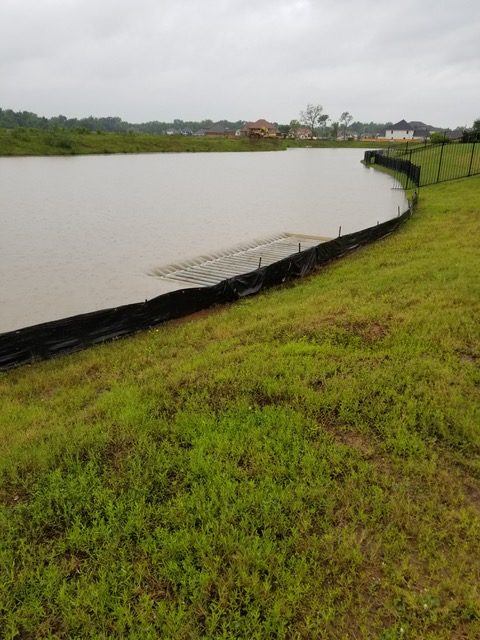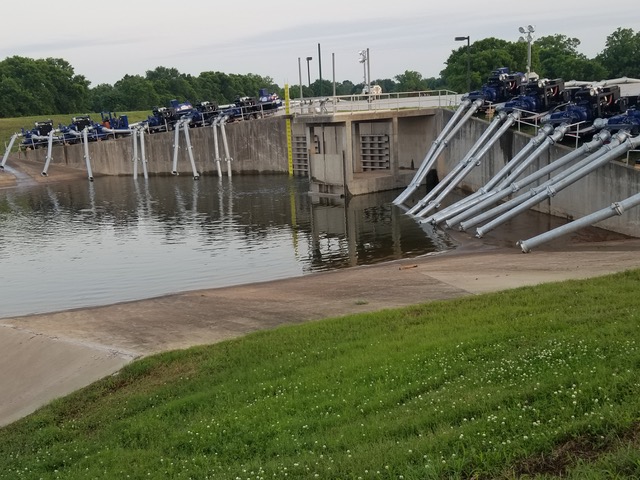While it was a a stormy night the rain totals varied widely across the district. A Space City Weather rain total (below) shows the reported variations. The lower than expected rainfall for our area and the greatly expanded pumping power at the Steep Bank Creek pump station has resulted in increased detainment for the upcoming storms. The forecast is for isolated and scattered thunderstorms today and throughout the evening. The current break from storms looks to arrive Saturday afternoon; however, we all know our regional weather can change rapidly.
Alcorn Pump Station – At the last LID 15 meeting the board of directors approved the purchase of five (5) temporary gator pumps for the Alcorn pump station. They were scheduled to arrive today. The weather up north has delayed three of the pumps but two are in route to the station this morning and will be operational for the next round of storms. While the district is pumped down and has almost full detainment these pumps will provide additional pumping power this weekend.
Steep Bank Creek Pump Station – All 12 trailer mounted pumps were deployed for usage last night. Currently, eleven can be utilized (if needed) with one being repaired currently. These will not be pumping all the time, only when/if water levels reach certain heights. This pumping capacity is in addition to the four existing large pumps in the pump station.
Based on the rain expectations and the pumping power in the district we do not anticipate any issues. We will update everyone if any of the variables change. As a constant reminder, in times of heavy rains street ponding is possible. Please be careful, especially at night, driving during these times. Most importantly, never drive into high standing water.











